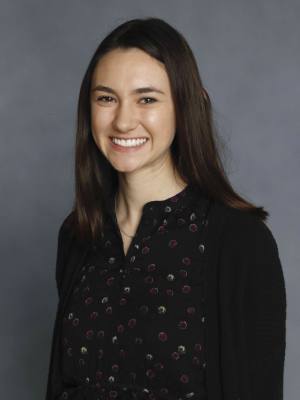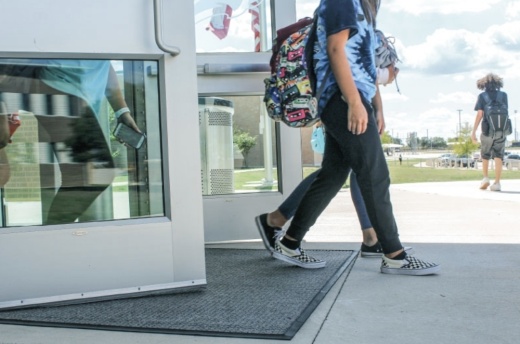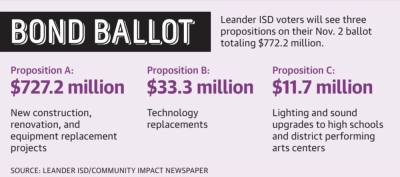The district is expecting rapid growth over the next 10 years with about 13,000 more students expected districtwide. New schools are needed to prevent overcrowding, and renovations and updates are needed at aging schools, according to the district.
Growth was a large factor in building the bond, LISD board President Trish Bode said. But taking care of existing buildings with projects such as roofs and air conditioner replacements maintains a space for students to learn and grow.
Every student’s quality of learning will be impacted through the proposed bond, Bode said.
For example, all elementary students will see playground improvements. Students in the 18+ Transition Services program would receive a permanent building through Proposition A. Districtwide, students and staff will receive technology device replacements if voters approve Proposition B. High school students would see auditorium upgrades in Proposition C and band instrument replacements in Proposition A.
“I appreciate that there is something for every student in here,” Bode said.
What is in the bond
The $772.2 million bond includes projects such as new school construction, technology updates and aging school improvements. On Aug. 5, the board of trustees unanimously approved ordering the Nov. 2 election.
While listed separately, the three propositions are interdependent with some technology infrastructure in Proposition A that depends on the passage of Proposition B for the aging device replacements.
“If Proposition A passes but B or C did not, we would have to address the needs of the other propositions in a different way,” LISD spokesperson Corey Ryan said.
The most expensive projects within the package are the design and construction of three elementary schools, a middle school, a “high school of choice” and a building for the alternative New Hope High School.
The high school of choice serves a dual purpose for LISD: It delays the need for a larger high school that would cost about $250 million and offers open high school enrollment for a specifically identified program. These could include a health profession high school; a science, technology, engineering and mathematics academy; a trade school; or a fine arts academy.
If approved, the board would go through a community-led process to see what the interest and needs of the community would be for a particular program.
"If we can provide that choice and also help stem off crowded high schools, that pushes off the need for a seventh high school,” Ryan said. “The other thing is, because we look at total build-out, we might never need an eighth high school if we create enough demand through a school of choice.”
Before calling the bond, board members weighed either a less-expensive three-year bond program or a more expensive four-year bond program. Trustees chose the three-year bond cycle with $41 million in bond savings toward the total bond cost from an unbuilt elementary school in the 2007 bond. In their discussions, board members said the lower-cost bond would have a greater chance at voter approval.
The three-year cycle postpones two recommended projects: an early college high school building for a future Austin Community College partnership and an administration building expansion. These delayed projects would be included in the next bond, which could be called in 2024.
“We haven’t cut anything. We’ve just rearranged how we do this,” Superintendent Bruce Gearing said to the board on Aug. 3. “That brings different challenges, different consequences. But we’re a fast-growth district. We’re good at dealing with challenges and consequences.”
Bond planning
The school board’s decision to call the 2021 bond centered on the LISD Citizens’ Facility Advisory Committee’s recommendation. The district was able to call up to a $1 billion bond without a tax rate increase, though LISD taxpayers will likely see an increased tax bill as a result of increasing home prices. The board also used bond savings to reduce the cost, Bode said.
A steering committee began with $1.5 billion in projects from five subcommittees: elementary school, middle school, high school, ancillary services and technology projects. The 25-member steering committee divided the list into tiers based on need as critical, important or supplemental. The steering committee presented a $933.4 million bond recommendation to the school board on June 17.
Bode said the school board took the committee’s recommendation and then considered if the projects needed to be bonded, how projects affected students’ learning and how projects match LISD’s core beliefs.
“So what you actually see is a smaller price tag coming to the community asking them to bond,” Bode said. “I think there is a lot of thoughtful deliberation.”
Past LISD bonds were approved in 2006, 2007 and 2017. The most recent bond for $454.4 million included school construction of Larkspur Elementary School, Tarvin Elementary School, Elementary School No. 29 in the Bryson subdivision and Danielson Middle School.
Potential outcomes
If voters approve all three propositions, the projects would be completed in phases, according to the district. The school district would not sell the entire $772.2 million package at once and the debt would be incurred over time and can only be spent on the projects identified in the bond.
If voters choose to not approve any of the three propositions, the district and school board will have to consider different ways to meet its needs, Ryan said. Potential workarounds could include pulling money from different sources, putting unapproved projects into a future bond or allowing infrastructure to age out.
The 2006 bond included one of three successful propositions; voters did not pass the other two. The 2007 and 2017 single-proposition bonds passed with 56% and 66% of votes, respectively.
A study presented to LISD board members in August showed voters were more supportive than against the sample bond packages. Voter support increased after they were further informed on the bond, said Matt Gamble, who represented survey firm Baselice & Associates.
“People are supportive of these specific projects and these bond proposals once they heard more about them,” Gamble told the board in July.
Bode, who was also on the school board during the 2017 bond process, said the 2021 bond had an extra level of transparency as CFAC meetings are available online for anyone to watch. She also cited the strong financial standing of the district in its ability to create a bond that does not require a tax rate increase.
“I am very thankful that our district is in such a place that I feel confident in our board’s decision of putting this on the ballot for our community to look at and see if it’s something they want to support,” Bode said.
The full list of bond projects is listed on the district's website.






